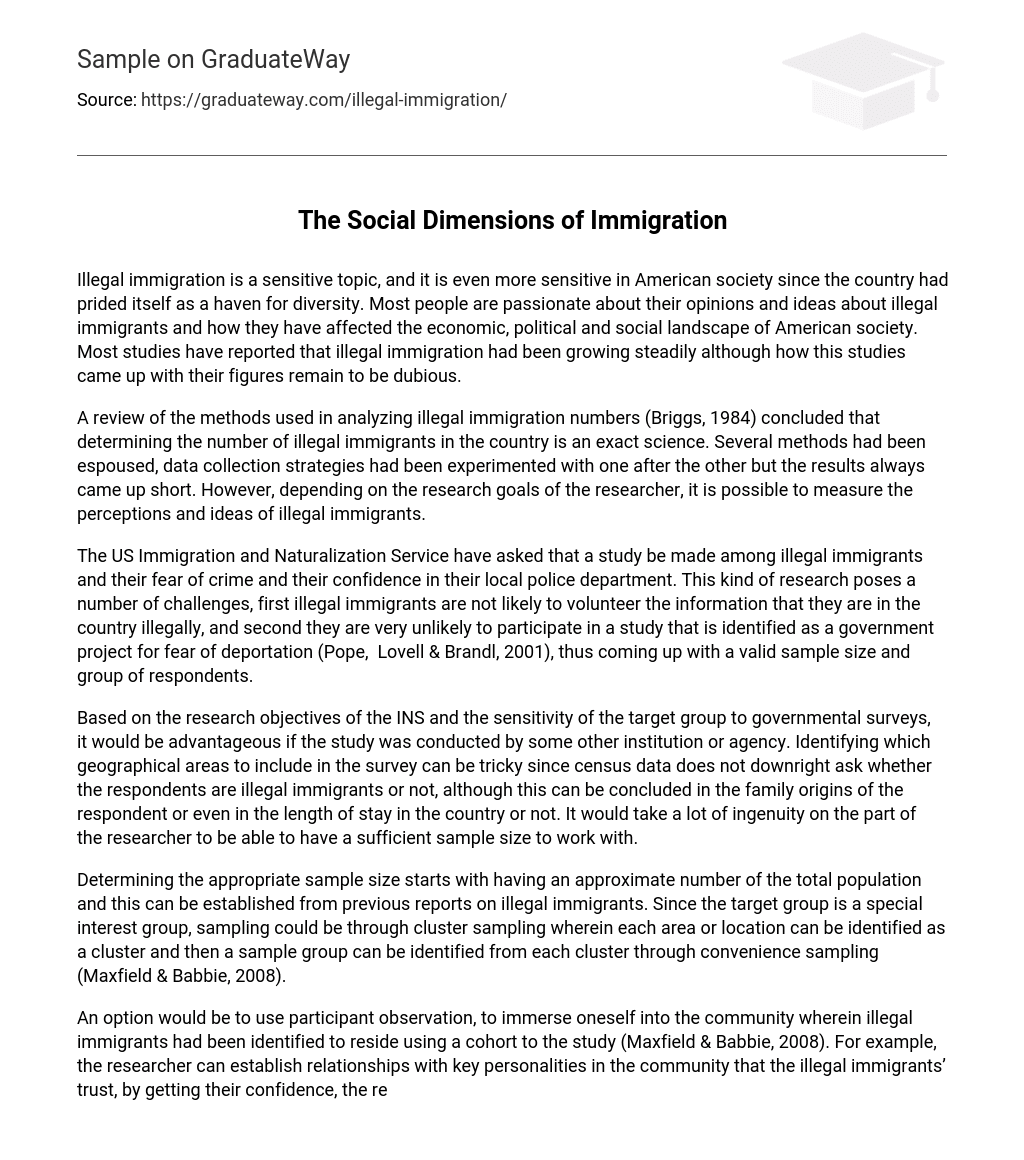Illegal immigration is a sensitive topic, and it is even more sensitive in American society since the country had prided itself as a haven for diversity. Most people are passionate about their opinions and ideas about illegal immigrants and how they have affected the economic, political and social landscape of American society. Most studies have reported that illegal immigration had been growing steadily although how this studies came up with their figures remain to be dubious.
A review of the methods used in analyzing illegal immigration numbers (Briggs, 1984) concluded that determining the number of illegal immigrants in the country is an exact science. Several methods had been espoused, data collection strategies had been experimented with one after the other but the results always came up short. However, depending on the research goals of the researcher, it is possible to measure the perceptions and ideas of illegal immigrants.
The US Immigration and Naturalization Service have asked that a study be made among illegal immigrants and their fear of crime and their confidence in their local police department. This kind of research poses a number of challenges, first illegal immigrants are not likely to volunteer the information that they are in the country illegally, and second they are very unlikely to participate in a study that is identified as a government project for fear of deportation (Pope, Lovell & Brandl, 2001), thus coming up with a valid sample size and group of respondents.
Based on the research objectives of the INS and the sensitivity of the target group to governmental surveys, it would be advantageous if the study was conducted by some other institution or agency. Identifying which geographical areas to include in the survey can be tricky since census data does not downright ask whether the respondents are illegal immigrants or not, although this can be concluded in the family origins of the respondent or even in the length of stay in the country or not. It would take a lot of ingenuity on the part of the researcher to be able to have a sufficient sample size to work with.
Determining the appropriate sample size starts with having an approximate number of the total population and this can be established from previous reports on illegal immigrants. Since the target group is a special interest group, sampling could be through cluster sampling wherein each area or location can be identified as a cluster and then a sample group can be identified from each cluster through convenience sampling (Maxfield & Babbie, 2008).
An option would be to use participant observation, to immerse oneself into the community wherein illegal immigrants had been identified to reside using a cohort to the study (Maxfield & Babbie, 2008). For example, the researcher can establish relationships with key personalities in the community that the illegal immigrants’ trust, by getting their confidence, the researcher becomes more privy to their thoughts and feelings about crime and their confidence in the local police departments. The data can be gathered only through the experiences of the researcher with the community and the accounts shared by the illegal immigrants. However, this process would be lengthy and costly and it would entail that researchers be trained in how to become a participant observer.
Another option would be use deception in conducting a survey of the illegal immigrants; in this case, a group of researchers posing as university students who are doing their thesis would like to survey the community of illegal immigrants using a structured questionnaire (Maxfield & Babbie, 2008). The questionnaire would ask the participants their fears and confidence in the local police department and also if they are already American citizens.
In this way, the researcher could identify the respondents who have been an immigrant, as to their legal status in the country this can be verified by other means like from the local head of the community. The researchers could also ask the participants if they were illegal immigrants or not, but will be assured that their responses will be kept confidential; a contract could also be presented to help ease the fears of the respondents in giving the said information.
References
- Briggs, V. M., Jr. (1984). Methods of analysis of illegal immigration into the United States
- [Electronic version]. International Migration Review, 18, 623-641.
http://digitalcommons.ilr.cornell.edu/articles/6/ - Maxfield, M. & Babbie, E. (2008). Research Methods for Criminal Justice and Criminology, 5th
- ed. Boston, MA: Thomson/Wadsworth.
- Pope, C., Lovell, R. & Brandl, S. (2001). Voices from the Field: Readings in Criminal Justice
- Research, 1st ed. Boston, MA: Thomson/Wadsworth.





